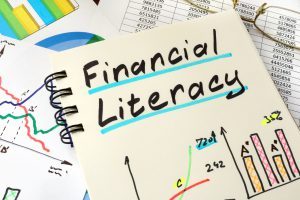Tips from Junior Achievement’s financial literacy program
June 20, 2013
 Junior Achievement has been promoting the importance of financial literacy for years. Adults can learn from what is being taught to these children from one of their special grade 7 programs.
Junior Achievement has been promoting the importance of financial literacy for years. Adults can learn from what is being taught to these children from one of their special grade 7 programs.
I had the opportunity to spend a day with a grade 7 class at the Pope John Paul II Elementary Catholic School in Glen Abbey. The day long basic course is broken down into four sections. Consider this Financial Literacy 101. It touches on the important things all of us should understand when managing our personal finances.
The first topic is money. There was a day not long ago when money referred to currency we carried in our pocket or wallet. This and cheques were how we purchased goods and services.
Now there are many different ways to complete a purchase. The two most important new options, debit and credit cards have significant implications on how to be a smart shopper.
Being a smart shopper was the second topic. The course content explains the differences between purchases that are wants and needs. If you have a shopping discipline problem then a debit card is better than a credit card because you can only spend what money is in your account.
A credit card allows you to accumulate consumer debt. If you cannot pay the credit card debt within one month, the interest charges are close to 20 percent. In this era of historic low interest rates, paying that high amount on debt for something you did not likely need is an expensive mistake.
This valuable lesson in the classroom was just theory but for adults, the misuse of consumer credit and our habit of overspending is the most significant risk to Canadians. The problem is so important the Canadian government has categorized excessively high household debt as one of our country’s most serious financial risks.
Looking after your money was the third section. Most revealing were the similarities between adults and grade 7 students. Their main financial tool was the use of a budget. This is what was most challenging for the students and also happens to be the most challenging for adults.
A group exercise required the students to plan a fictitious class trip. They were confronted with estimating the costs and how to raise funds to cover those costs. This reminded me of a similar exercise during my university days when our professor defined the cost of living as 10 percent more than what people make.
Budgeting is hard both in the classroom and in the real world. We typically do not budget even for what is most important to us such as assisting children with their post-secondary education and preparing for our retirement. This should be a valuable lesson for all of us.
The final section, investments, included everything from GICs to stocks and bonds. Each investment type has its own characteristics and its own purpose. It is important to know which investment options and proportions to use during the various stages of our life.
This is referred to as asset allocation. I have observed in the investment industry that both clients and advisors spend too much time focusing on the specifics of various investments; not doing the fundamental planning that should be done first to lead to appropriate asset allocation.
One conclusion taken from the financial literacy course taught to Grade 7 students is that the same lessons apply to adults. Paying attention to the fundamentals of personal finance can improve your financial success.
RELATED ARTICLES
